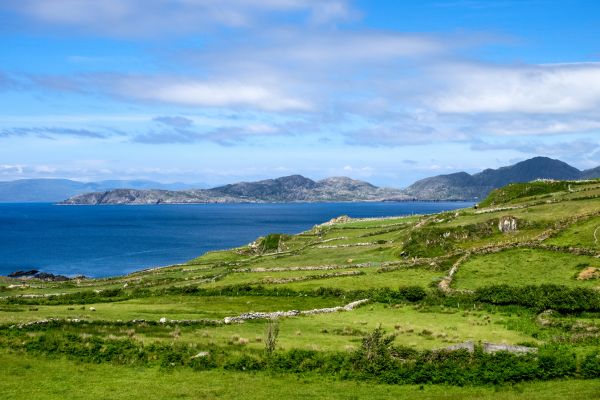The O’Sullivan clan, or Ó Súilleabháin in Irish, is one of the oldest and most distinguished families in Ireland.
In the centuries following the adoption of the O’Sullivan surname, the clan would grow in power and influence. Their regions covered County Tipperary and County Kerry.
By the time of the Norman invasion in the late 12th century, the O’Sullivans were one of the leading families in Munster.
They maintained their power and influence through the Middle Ages, despite the political changes brought about by the Normans and later English rule. The O’Sullivan name remains one of the most common in Ireland.
Origin Of The O’Sullivan Clans
The O’Sullivans claim Olioll Olum as their ultimate ancestor. He was a legendary king of Munster in the 3rd century.
Olioll Olum is said to have divided his kingdom between his sons before his death. Many of the great Irish families claim descent from one or other of these sons.
Olioll’s son Cormac Cas received the territory associated with the Dál gCais (Dalcassians). The descendants would become hugely influential in later centuries. The most prominent would be Brian Boru, who became High King of Ireland in 978.
Olioll’s son Eoghan (Owen) received the territory that would become associated with the Eóganachta. This branch rose to prominence in the 6th or 7th century. For the next several centuries, they were the dominant political force in Munster until the rise of the Dail gCais.
The Eóganachta had several major branches. The two most prominent were the O’Sullivan Mor and the O’Sullivan Beare.
The “Mor” in O’Sullivan Mor means great or large. Their lands were in South Kerry, with their principal castle close to what is now Kenmare town.
The O’Sullivan Beare took their name from their base in the Beara Peninsula that spans West Cork and South Kerry.

The most famous chieftain from these two branches was Donal Cam O’Sullivan Beare.
Donal Cam O’Sullivan Beare
The O’Sullivan Beare title was held by successive chiefs of this branch of the O’Sullivan family.
Donal Cam O’Sullivan Beare lived from about 1561 to 1618. He became renowned for his military leadership during the Nine Years’ War against the English at the turn of the 17th century.
The decisive battle commenced in October 1601 at Kinsale in Cork. The Irish forces were made up of the O’Sullivan Beare clan, the O’Driscolls, and the O’Connors.
They were joined by 3,400 Spanish soldiers, but the Spaniards surrendered their positions in January 1602.
Donal Cam held his castle for eleven days before gathering his people to retreat. He led one thousand men, women, and children from Cork for 500 kilometers across six counties to reach Leitrim and his allies, the O’Rourke clan.
This retreat is known as O’Sullivan Beare’s March. Only thirty-five survivors of the original group made it to the end of the journey. Many succumbed to battles, harsh weather, and hunger.
However, many others found shelter along the way and settled in these places. These groups were known for centuries as the Bearas.
The title of O’Sullivan Beare and the associated lands were confiscated by the English after Donal Cam’s resistance. The lands were subsequently colonized during the Plantation of Munster.